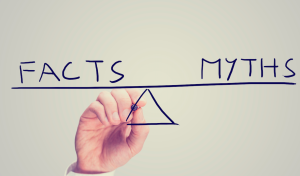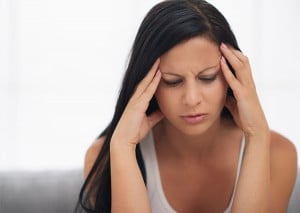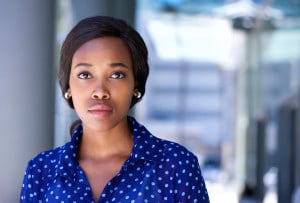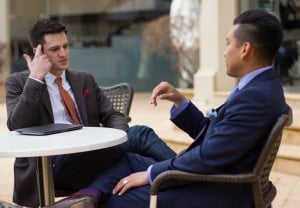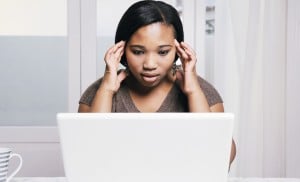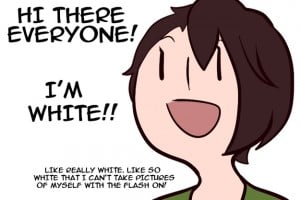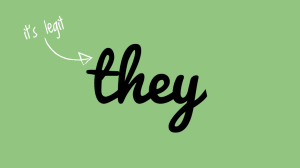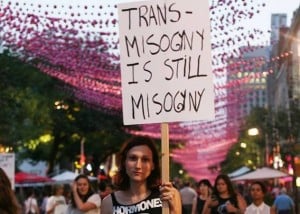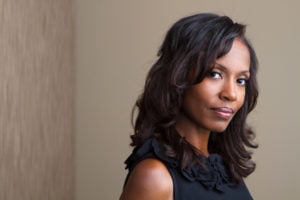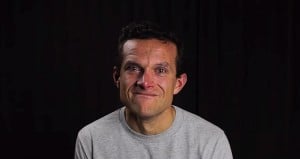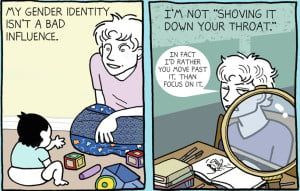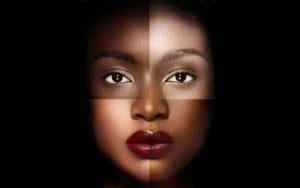
Source: Ebony
Read this article in Spanish here!
(Trigger Warning: Racist/colorist slurs.)
“High yellow, light-skinned, redbone, Oreo.”
“Purple black, blue black, midnight, monkey.”
Before I heard some of these phrases and slurs spew from the mouths of white people, I first knew them within my own community of Black school kids.
As a youth with no real understanding of “colorism” – which I would now define as internalized racism and white supremacy within the Black community and other communities of color – I felt confusion, shame, and pain around my skin color and the story it told.
Look at a photo of my extended family, and you will see skin tones as broad and diverse as the Black community and the African Diaspora itself.
We are beige and toffee, café au lait and deep chocolate; kinky haired and loc’d, curly fro’d and wavy flat.
We are bound, like many other Black families, by the shared ancestral pains of slavery, separated kin, sexual assault by white slave masters, and the pervasive, damaging impacts of racism.
And, as I came to learn, our experiences of race, racism, and community vary greatly by our skin tones (and other intersectional differences). My place in an all Black family did not and does not guarantee that their oppression is my oppression.
I clearly recall my mother having very different conversations with my older brother, who has deep brown skin.
“Wear a belt, and make sure you’re wearing your ball cap straight.,” she’d advise. “If you see a police officer, you call him ‘sir’ and tell him where you live.” I didn’t need those warnings as a light-skinned, assigned female at birth youth, and I still don’t need them.
For example, consider this “close call” a white friend and I had with the police as truant high-schoolers.
We had been smoking pot in a public space, and the white officer was responding to a report. I was terrified. But he gave us a brief lecture, smashed my pipe on the pavement, took our information, and let us go.
I know how the police would have responded to this call had it involved two of my darker skinned brothers. I have seen it. I have seen them stopped for no reason aside from their complexion, questioned with their backs against the wall and their hands up.
And while it is disproportionately Black men who are brutalized by the police and vigilantes, this violence and psychological terror also impacts Black womyn and trans* womyn of color.
We live in a country and world that perceives dark skin as evil, threatening, foreign, exotified, and objectified.
Because my light skin is associated with whiteness, I am perceived as less threatening, more beautiful or attractive, more educated. I did not and do not need the same warnings as my brothers.
But as a child who knew little more than the fact that we were all Black and shared that basic commonality, I was deeply confused and pained by the lack of acceptance and the bullying that I experienced – primarily by Black girls in my school:
“Which one of your parents is white, your mama or your daddy?”
“You’re tryin’ to be white and act better and smarter than everybody!”
“Oreo, you ain’t even Black!”
And on and on the voices went.
When I came home, my mom would express concern over my lack of Black friends, which confused me further.
Knowing little about the implications of my light skinned and class privilege, I thought of myself as victimized and having no community to call my own.
There is no denying the impact this had on me – I had deeply hurt feelings.
But I also still, regardless of my hurt, had access and privilege that my peers did not because of the systemic oppression they experienced. In my light skin and middle class status, and even in the way I spoke, I represented whiteness – the oppressor.
Far from being the victim I had believed myself to be as a child, over time, I became starkly aware of the privilege I carried.
The Internalized Racism of Colorism
US society and many global cultures have historically and presently valued white and light skin and European standards of beauty.
As early as (and likely dating back before) slavery, the values of a racist and white supremacist culture perpetuated themselves in greater US society and, consequently, within communities of color.
During slavery, slaves with lighter skin were often made to do the work of cooking and cleaning within the slaver master’s house, while those with darker complexions were left to the back-breaking work done in the plantation fields.
The former were often children of the slave masters, and though unable to fully escape the horrors of the “scientific” experiments of the eugenics movement, abuse at the hands of the mistress, and rape – they were commonly granted distinct treatment.
Some were even offered the skills and opportunity to work off of the plantation so they could purchase their freedom.
Post slavery and throughout the Jim Crow era, Black churches, fraternities, sororities, and other organizations used the infamous “Brown paper bag test” – to discriminate against and exclude Black people with darker complexion.
Presently, ghosts of the Brown paper bag test continue to haunt us when images of lighter skinned Black folks continue to dominate the media, even amongst those that feature all Black casts, performers, and celebrities.
Global sales for skin-lightening cream remain steady. Photoshopped images in which the model’s skin has been lightened are commonplace.
All of these well-known historical and modern-day examples send the same message: They reward and value light skin and associations of whiteness and dehumanize, oppress, and silence the lives of people of color of deeper shades.
The implications of class, sex, and gender further complicate the effects of racism and colorism.
The often unchecked hoisting up of light-skinned lives and narratives within communities of color mirrors, in many ways, white privilege and supremacy.
Colorism and its many present-day faces within the Black community (i.e. “team light skin”) are proof that white supremacy and racist systems are operating exactly how they were intended to.
Defending Blackness vs. Defending the Right to Life
Throughout my youth, I straddled between not being “Black enough” and being “too Black” wherever I went. My peers mocked me when, in class projects, I shared about my grandparents’ involvement in the Civil Rights Movement since, supposedly, I was “not Black.”
Then I came around white kids, and they’d comment about how “nasty” it was that I didn’t wash my hair every day, look confused when I got upset at their racist jokes, tell me there was “no way” I could be related to my brother, since he was Black.
“I’m going to start carrying around a picture of my mommy and my daddy in my wallet, in case anyone wants to know,” I thought one day in my junior high school, after being asked “what I was mixed with” once again.
I was twelve and already tired of “having to prove” my Blackness to people. I know that this was a painful time period of my life for many reasons, and my first real introduction to the messy (yet beautiful) experience of being Black.
While I was in a constant state of vehemently defending my Blackness to anyone who questioned it, my peers of deeper complexions were already defending their right to live against the violent forces of racism of which I was largely oblivious.
I now understand that my quickness to defend my heritage was not only pride in where I came from, but also deep shame and hatred of being associated with whiteness.
‘So What? I Can’t Help My Skin Tone!’
I recently wrote about recognizing our privilege as members of marginalized communities. I spoke about how, although I belong to an oppressed racial group as a Black person, I often benefit from my light skin in many spaces.
Clearly, being born with lighter skin was not something that I chose (just as being born white was not something those benefiting from white privilege chose), but I must recognize how I am privileged within my own community of folks.
For other light-skinned folks – this shit is messy, and I’m asking you to hold some really complicated (and sometimes contradictory) concepts!
It is true that “team light skin” and “team dark skin” is bullshit. It is true that it can really hurt to have the core our identity questioned by our own people. It is true that we are also impacted by the effects of racism and other forms of oppression.
And it is also true that we are given unfair privilege in all Black and all people or color spaces, and in greater US society, and we need to be aware of that.
We need to understand that our experiences as Black folks are different across shades, even if we share some of the same struggles. We need to center the voices of dark skinned folks, not just our own, as we are already overrepresented.
While there needs to be acknowledgement of the privilege light-skinned folks carry, this division amongst Black folks makes us less effective in the work towards eradicating racism. In the words of Audre Lorde, “The master’s tools will never dismantle the master’s house.”
Look at a photo of my family, or of me and my close friends, and you will see tones ranging as far and wide as the African Diaspora.
And the beauty of it is that we are all Black, all resilient, and we are committed to learning and unlearning all of this complex shit, including addressing the ways that some of us get privilege at each other’s expense, to be able to move forward and heal.
Ashe!
[do_widget id=”text-101″]
Michal “MJ” Jones is an awkward, Black, non-binary queer educator, activist, and musician writing to you from Oakland, CA. They’re hella into building spaces for queer and trans* youth of color, practicing kindness, using education as a tool of liberation, and making the personal political. They earned their BA in Sociology from Sonoma State University, where they served as president of the Queer Straight Alliance and advocated for students of color. They went on to earn an MA in Student Development Administration from Seattle University and remain committed to improving access and retention to higher education. Listen to their music or read more of their work. Follow them on Twitter @JustSayMJ and read their Everyday Feminism articles here.
Search our 3000+ articles!
Read our articles about:
Our online racial justice training
Used by hundreds of universities, non-profits, and businesses.
Click to learn more






